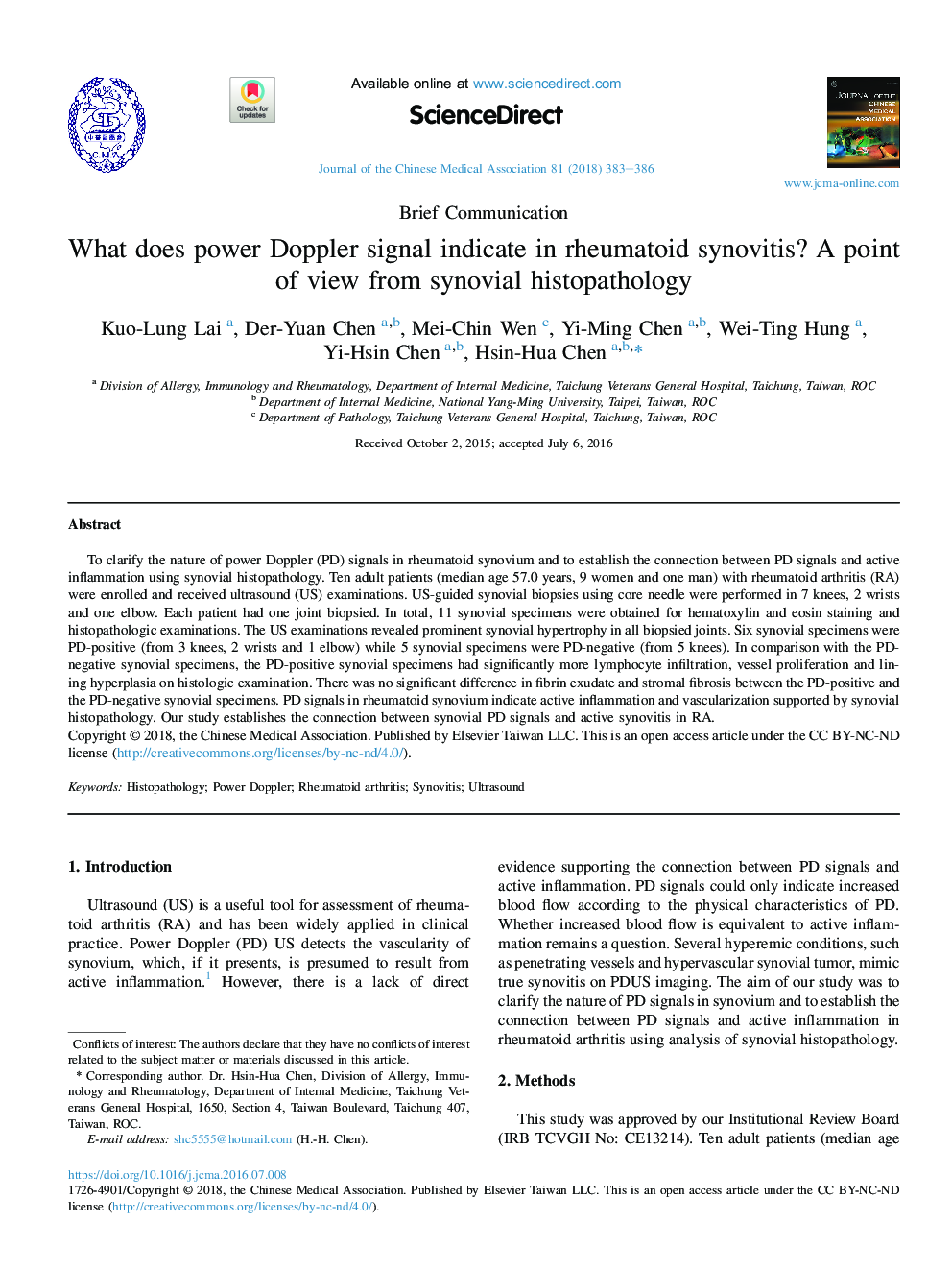| Article ID | Journal | Published Year | Pages | File Type |
|---|---|---|---|---|
| 8758953 | Journal of the Chinese Medical Association | 2018 | 4 Pages |
Abstract
To clarify the nature of power Doppler (PD) signals in rheumatoid synovium and to establish the connection between PD signals and active inflammation using synovial histopathology. Ten adult patients (median age 57.0 years, 9 women and one man) with rheumatoid arthritis (RA) were enrolled and received ultrasound (US) examinations. US-guided synovial biopsies using core needle were performed in 7 knees, 2 wrists and one elbow. Each patient had one joint biopsied. In total, 11 synovial specimens were obtained for hematoxylin and eosin staining and histopathologic examinations. The US examinations revealed prominent synovial hypertrophy in all biopsied joints. Six synovial specimens were PD-positive (from 3 knees, 2 wrists and 1 elbow) while 5 synovial specimens were PD-negative (from 5 knees). In comparison with the PD-negative synovial specimens, the PD-positive synovial specimens had significantly more lymphocyte infiltration, vessel proliferation and lining hyperplasia on histologic examination. There was no significant difference in fibrin exudate and stromal fibrosis between the PD-positive and the PD-negative synovial specimens. PD signals in rheumatoid synovium indicate active inflammation and vascularization supported by synovial histopathology. Our study establishes the connection between synovial PD signals and active synovitis in RA.
Related Topics
Health Sciences
Medicine and Dentistry
Medicine and Dentistry (General)
Authors
Kuo-Lung Lai, Der-Yuan Chen, Mei-Chin Wen, Yi-Ming Chen, Wei-Ting Hung, Yi-Hsin Chen, Hsin-Hua Chen,
